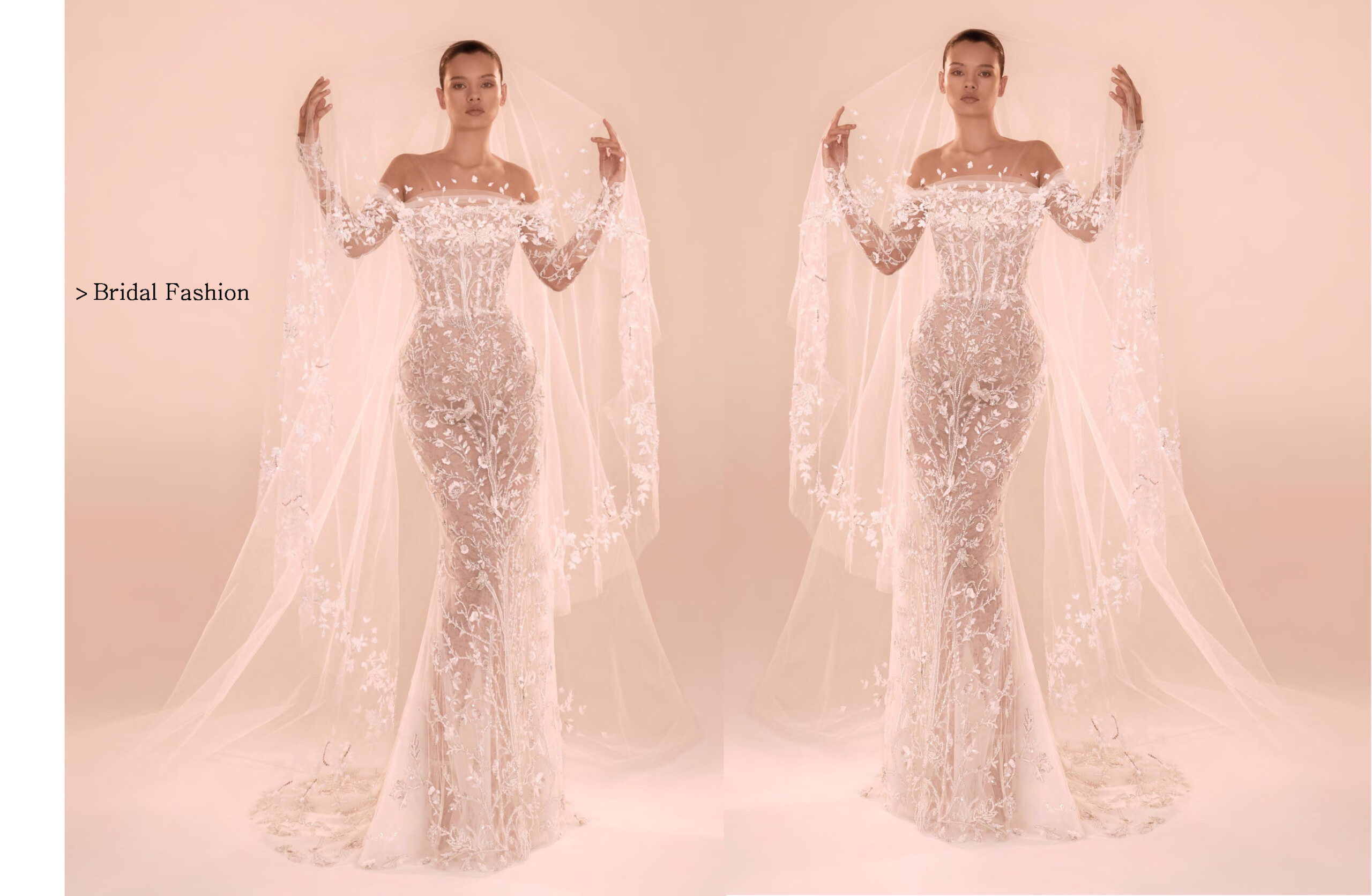
Fall 2026 Bridal Trends: Couture Lace, Architectural Ballgowns and Modern Details
For Fall 2026, the couture bridal collections felt like a layered love letter to craftsmanship, as designers unapologetically embraced romance and channeled themes of renewal, emotional storytelling, and the intersection of nature with modernity. The result? A collection of designs that celebrated femininity and artistry, featuring a timeless elegance from one design to the next.
The gowns were ethereal and refined. Often within a palette of warmed ivories and dusty pastel pink, these colorways provided a seemingly softer look when compared to the more traditional white hues. Anchored in fabrications of lace and tulle, their structured silhouettes displayed dimension, texture and depth, providing a physical example of how creating with precise craftsmanship makes all the difference.
The same could be said for the use of embellishments. Oscillating between ornate and subtle, styles could be seen donning lavish beading, 3D layered embroideries, and hand-painted motifs that somehow retained their light airiness for maximum movement. As a stark contrast, other designs were stripped of any adornments, allowing the overall construction to provide the dramatics and placing a spotlight on specialty fabrics and the incredible, sculpted shapes of each bodice and skirt.
This season, inspiration seemed to stem from the brides themselves. Unique to each designer’s aesthetic, they honed in on who their bride is and what inspires her, revisiting classic motifs through a modern lens. These powerful yet poetic pieces provided a seemingly endless array of combinations for them to choose from, providing an opportunity to curate a look that is reflective of their individualism and truly one of a kind.
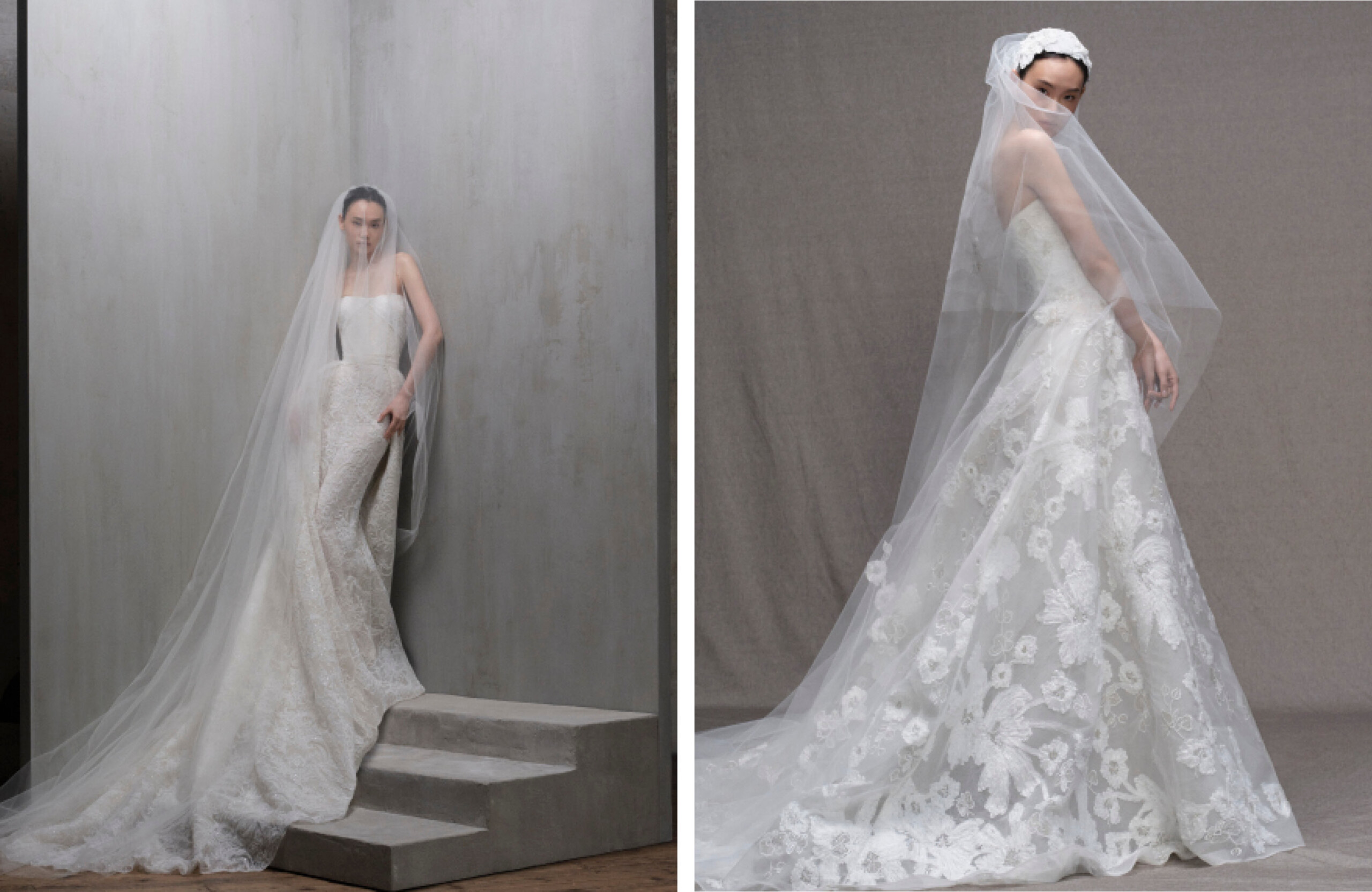
Narrative-Driven Bridal Veils
Veils made an assertive statement this season, becoming a narrative-driving accessory that felt both traditional and transformed. Some of these reimagined concepts included detachable feather-draped capes, rhinestone-encrusted headpieces or netting overlays that delicately rested across the eyes.
Some more traditional takes remained opulent, such as Elie Saab’s cathedral-length veils that mirrored the gown’s embroidery, while Zuhair Murad paired his dresses with celestial, bead-laden styles that amplified the ensembles’ drama. Anne Barge favored timeless simplicity, allowing classic silhouettes to shine, whereas Costarellos echoed the romance of his gowns with lace-trimmed veils inspired by Hellenic softness. Lihi Hod leaned into veils that were both simple yet fanciful thanks to pearl and floral embellishments while designers like Giovanna Randall of Honor used veils to reinforce emotion and movement, creating styles as expressive as the dress itself.
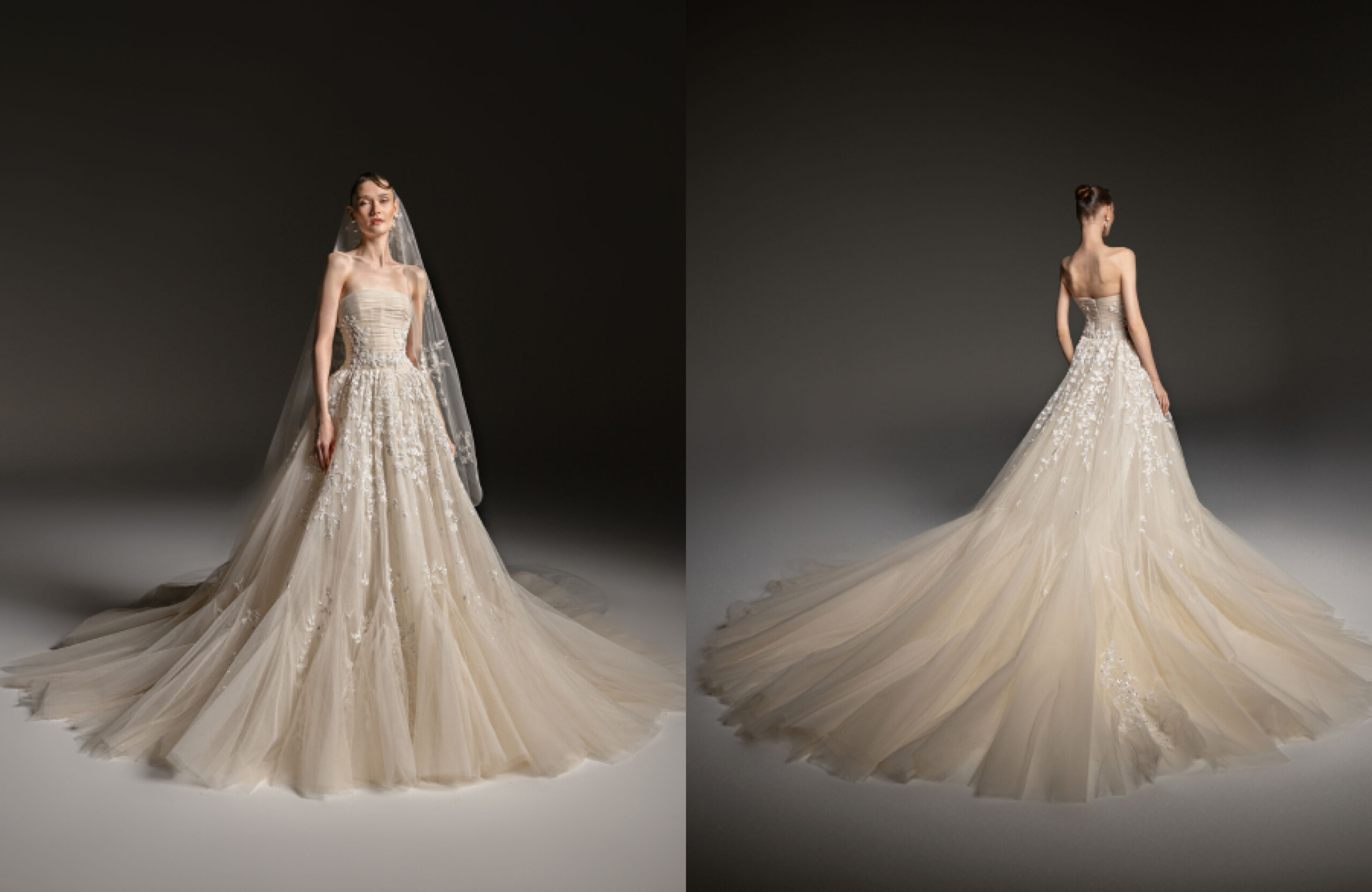
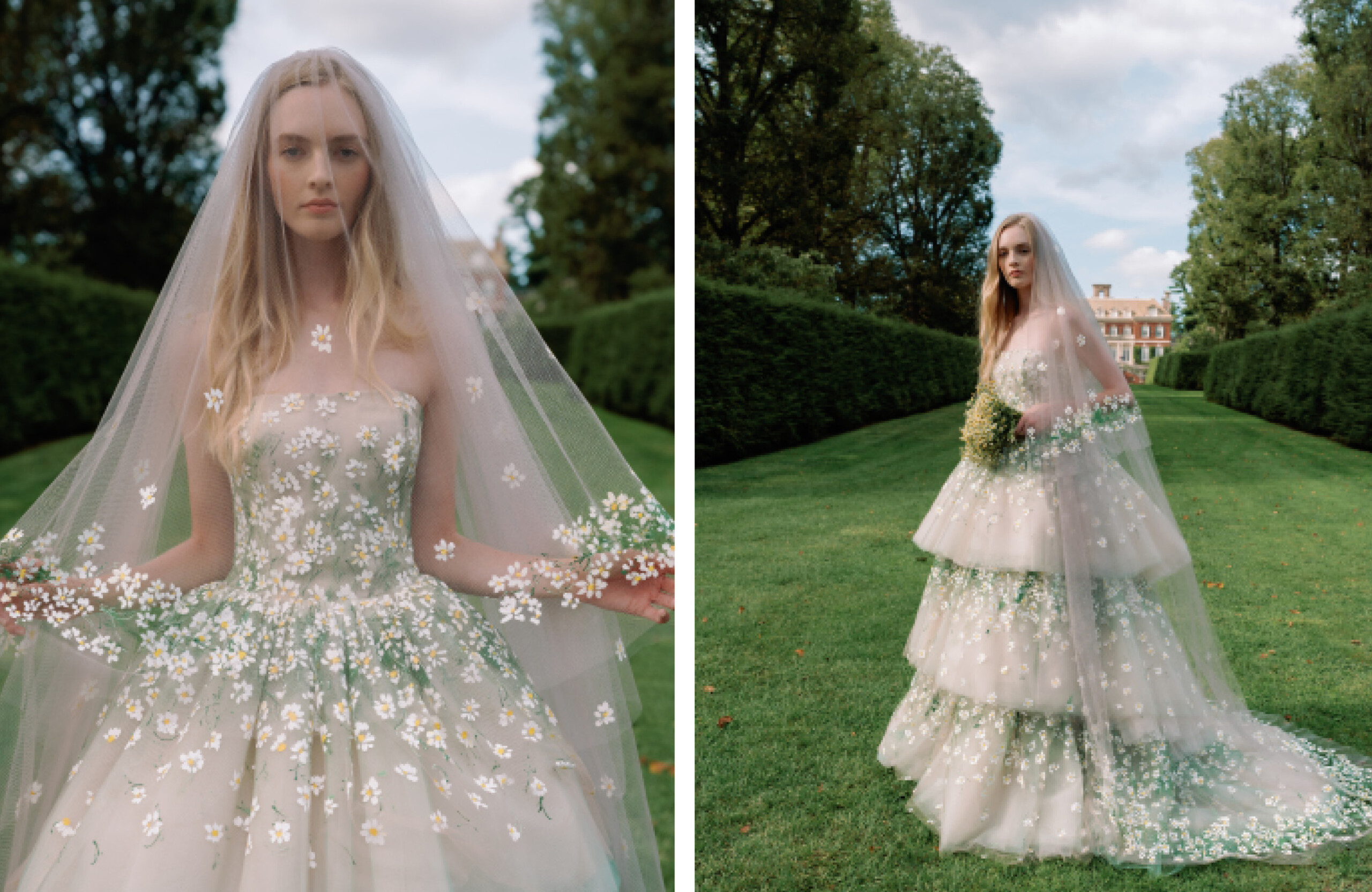
Reimagining the Bridal Ballgown
No trend defined Fall 2026 more dramatically than the takeover of the ballgown silhouette. With volume reimagined, designers embraced architectural construction, fluid layering, and grandeur that never felt heavy. Galia Lahav, Lihi Hod, Georges Hobeika, and Sareh Nouri, for example, evoke the duality of structure and softness due to their transformative corseted ballgowns that seemed to float with ease.

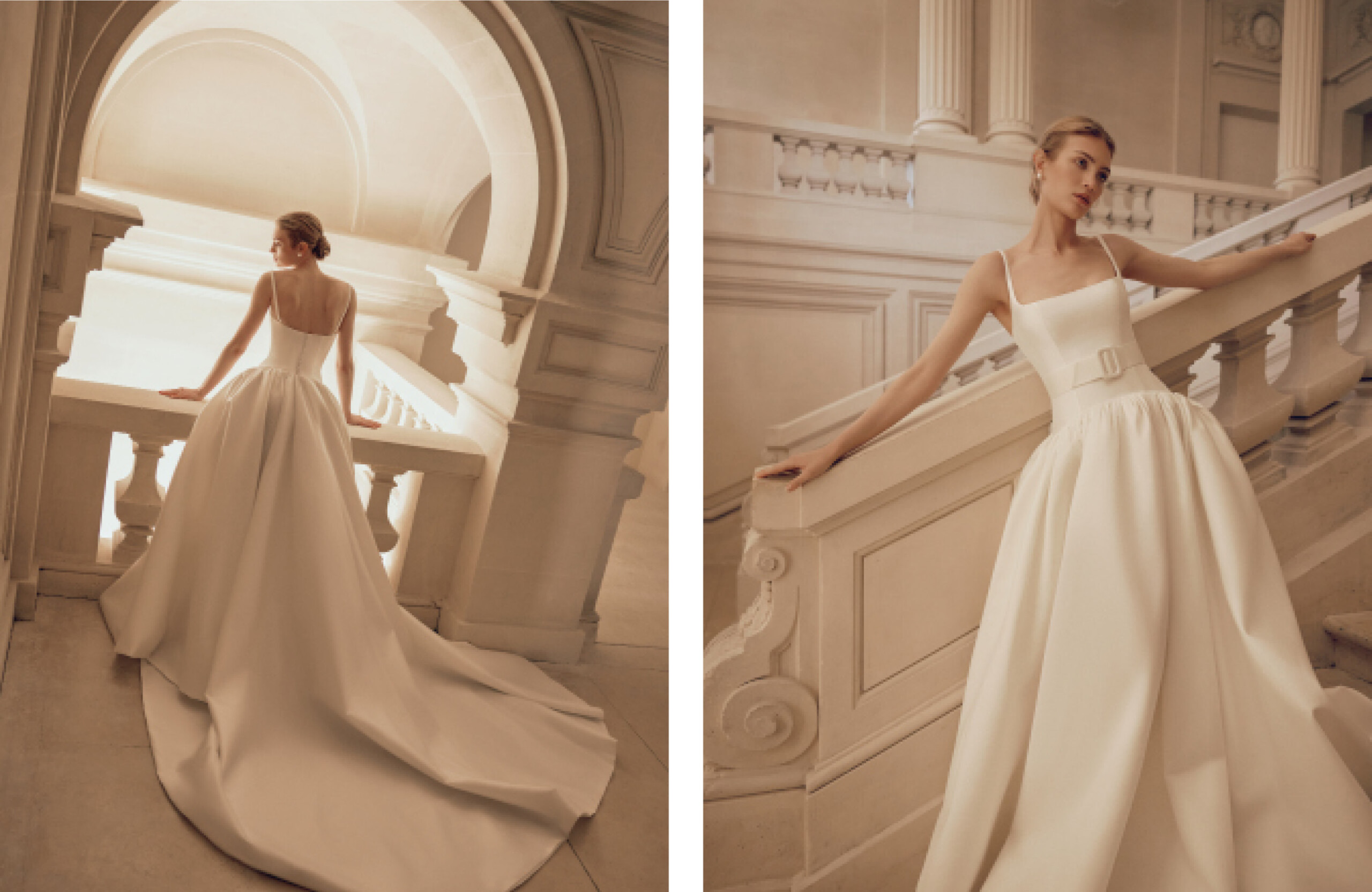
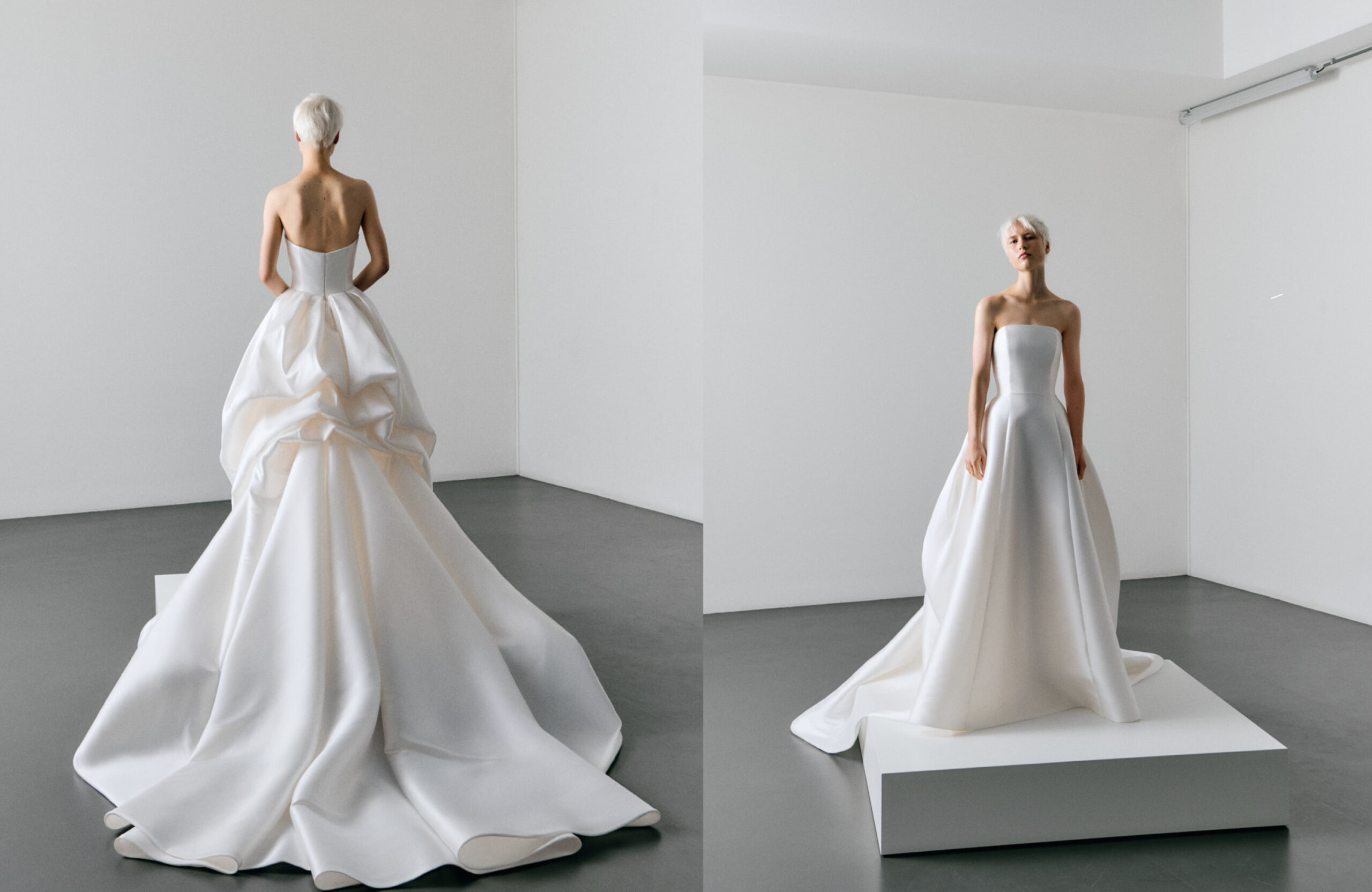
Marmar Halim and Nadia Manjarrez introduced a more emotional version of the shape, letting fluidity and movement guide the design, while Viktor&Rolf offered crisp, couture-driven volumes that bordered on a sculptural installation.
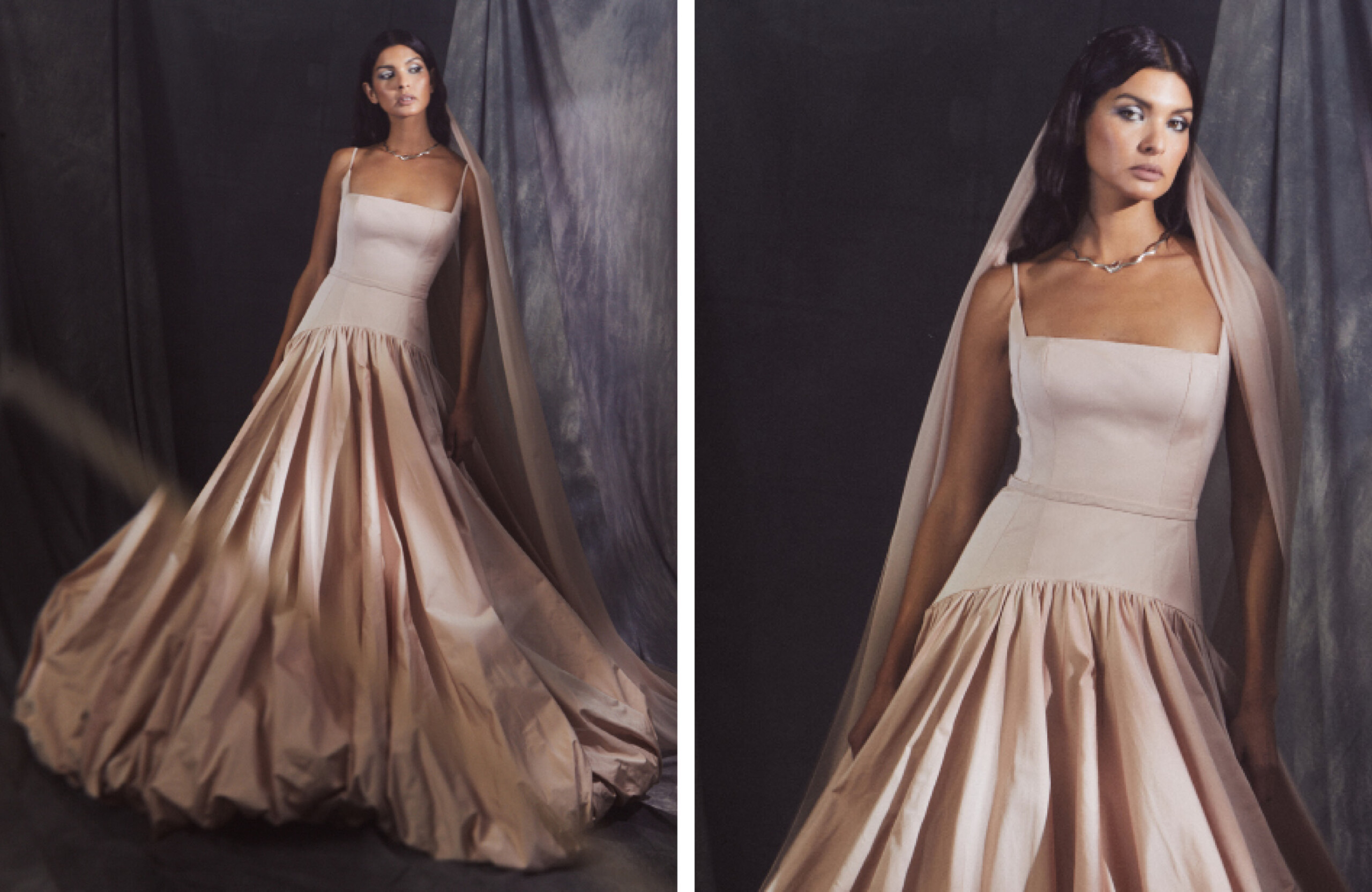
Lace as a Core Fabric
The first of these trends to highlight is lace, as it emerged as Fall 2026’s core fabric. Represented throughout almost every collection this season, it was used not as mere ornamentation, but as a sculptural foundation in its own right. A perfect representation of this usage can be found in the collections of Sareh Nouri and Elie Saab, as they celebrated the artistry of lace, highlighting novelty patterns and establishing dimension and depth through layered embroideries and floral motifs. House of Gilles’ softly draped point d’esprit and lace capelets gave heirloom elegance a fresh and lighter sensibility, while Jaclyn Whyte showcased inventive layering of lace decoupage, fusing couture craftsmanship with a more modern aesthetic.
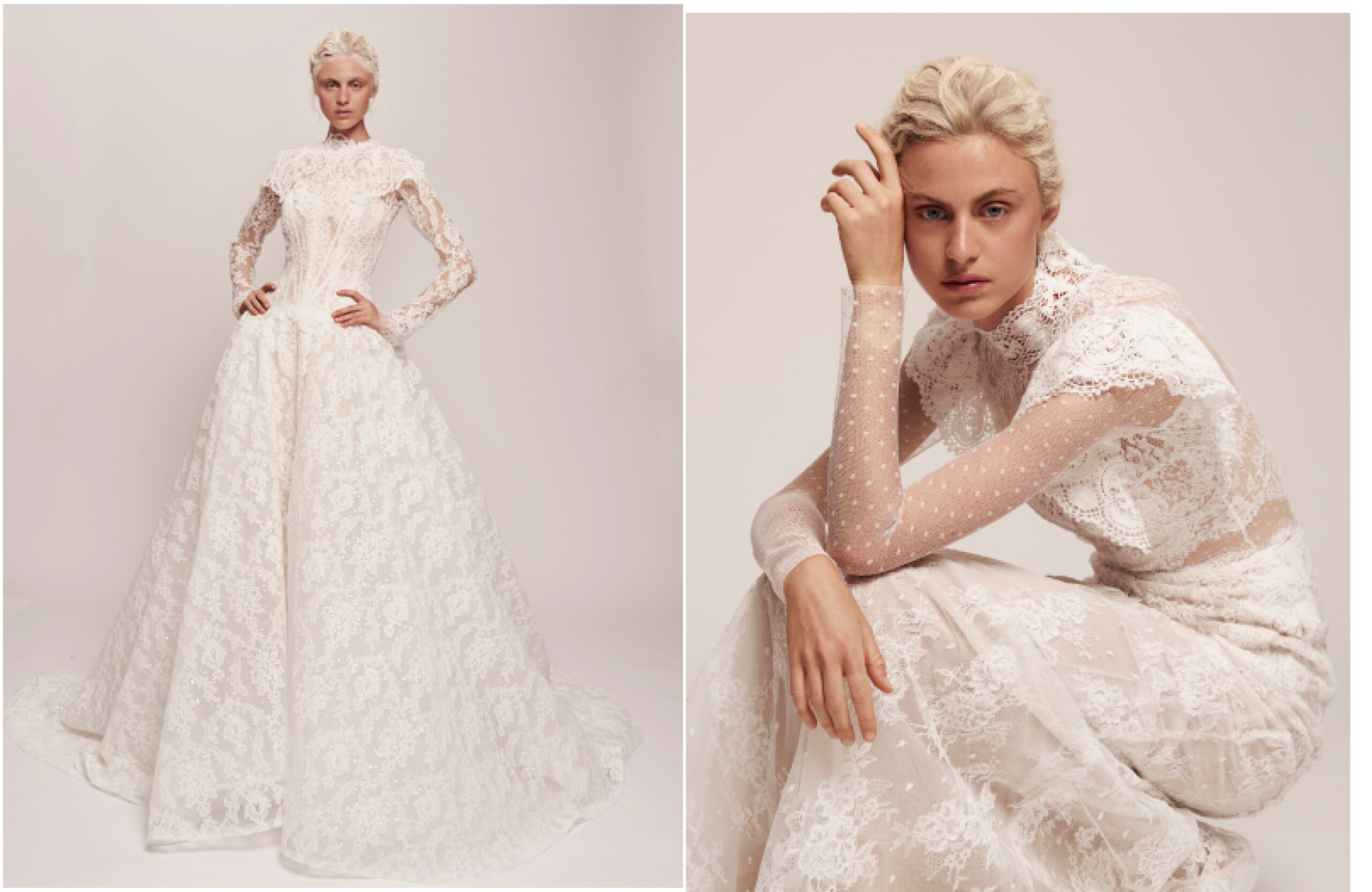
Jaclyn Whyte and Honor also embraced ballgown drama—Whyte through removable layers and lace-draped construction, and Honor through confection-inspired tiers reminiscent of an elegant wedding cake. Together, these designers redefined the bridal ballgown as both a statement and storytelling device.
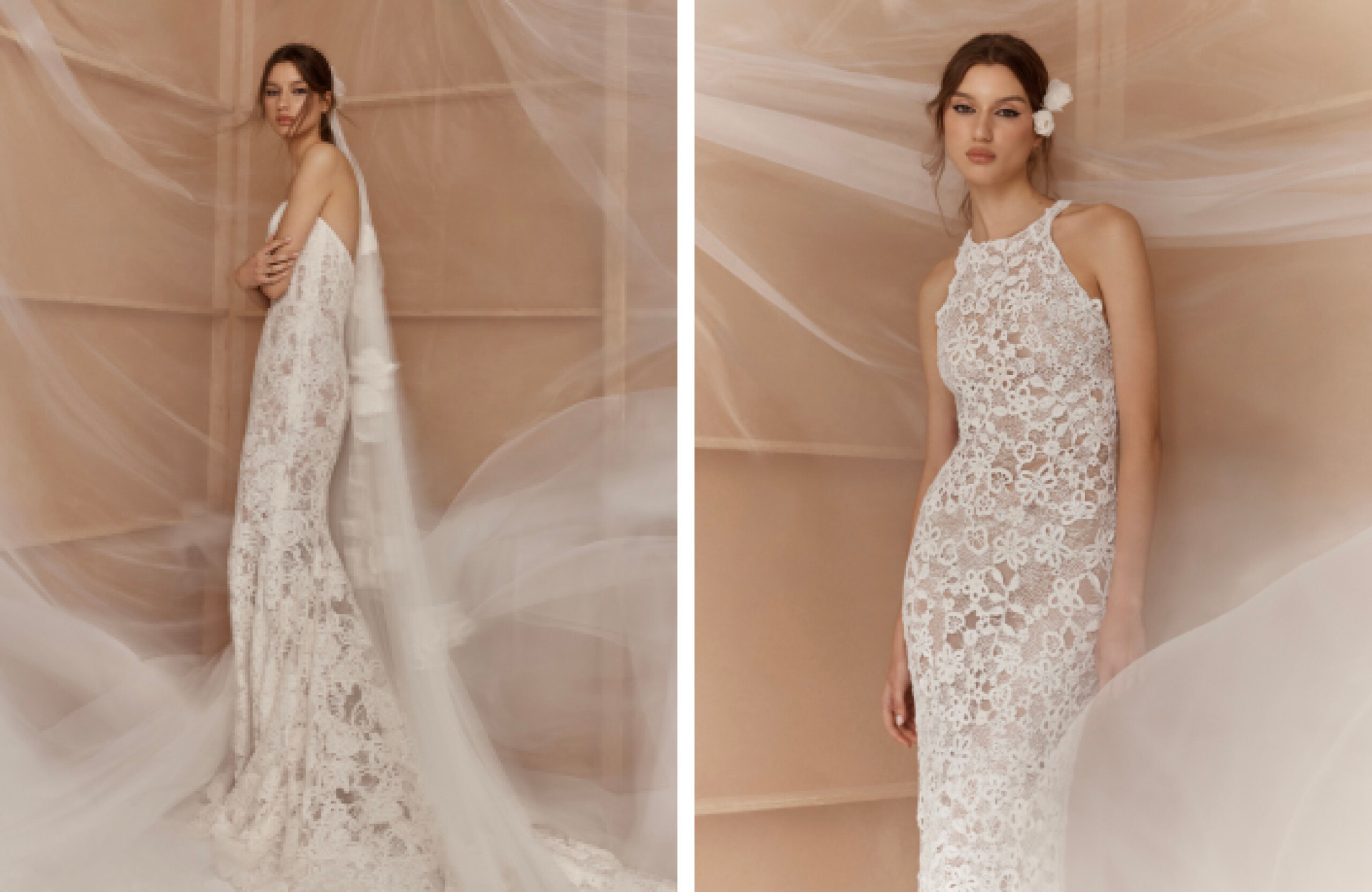
Francesca Miranda and Arava Polak also embraced the lace revival, each presenting airy, romantic interpretations—Miranda through organic, nature-inspired motifs, and Polak through refined European techniques that emphasized emotion and movement. Across the board, lace became a story of depth, detail, and tactile richness, defining the season’s return to craftsmanship.
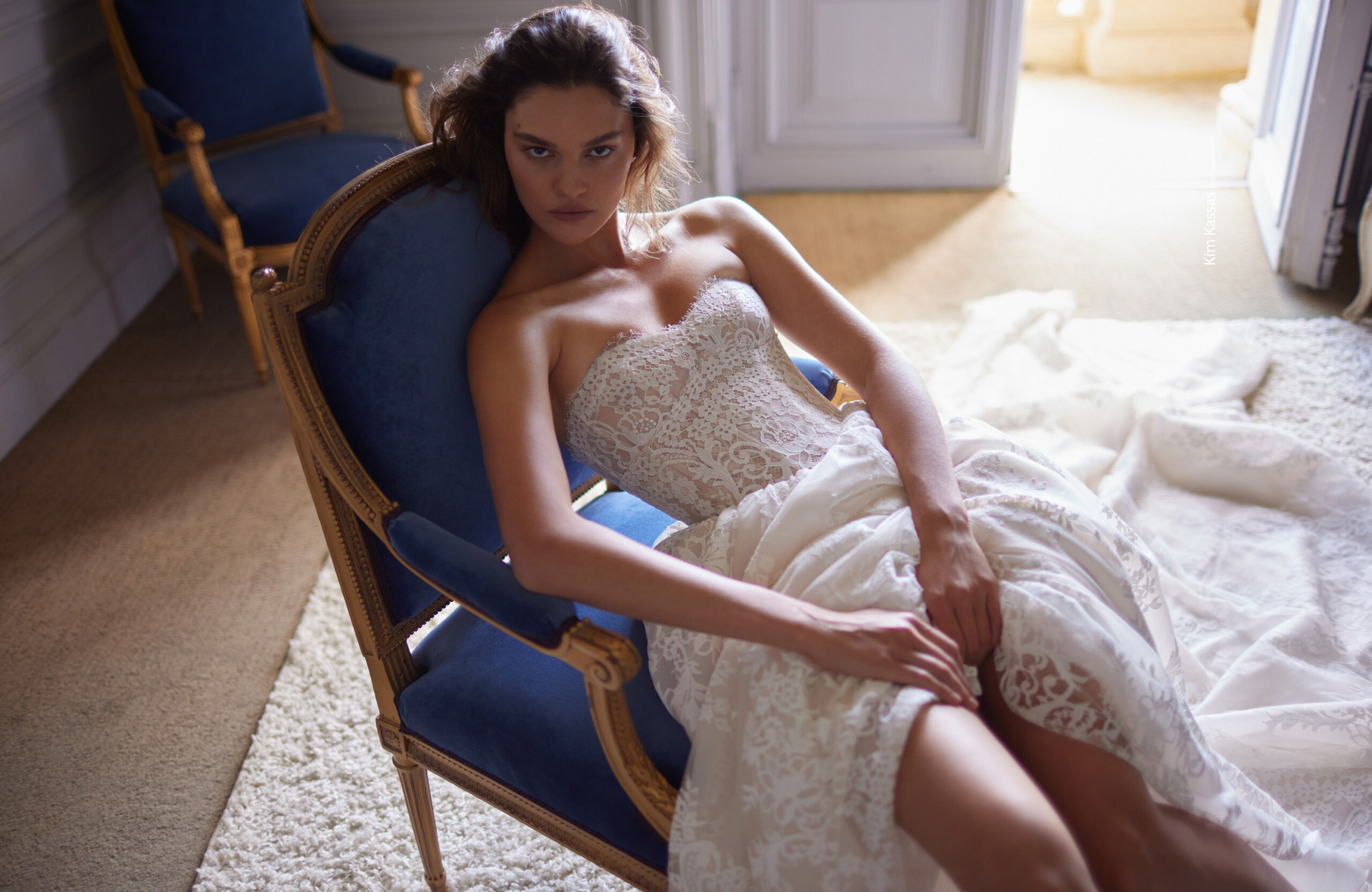
Arava Polak and Claire Pettibone, added bows as delicate finishing touches on minimalist dresses, proving how the trend could be both subtle and impactful. Meanwhile, the most innovative interpretation must be given to Victor de Souza, whose butterfly structured satin dress formed a bow-like shape, enveloping the bride and showcasing just how modern a classic embellishment can be.
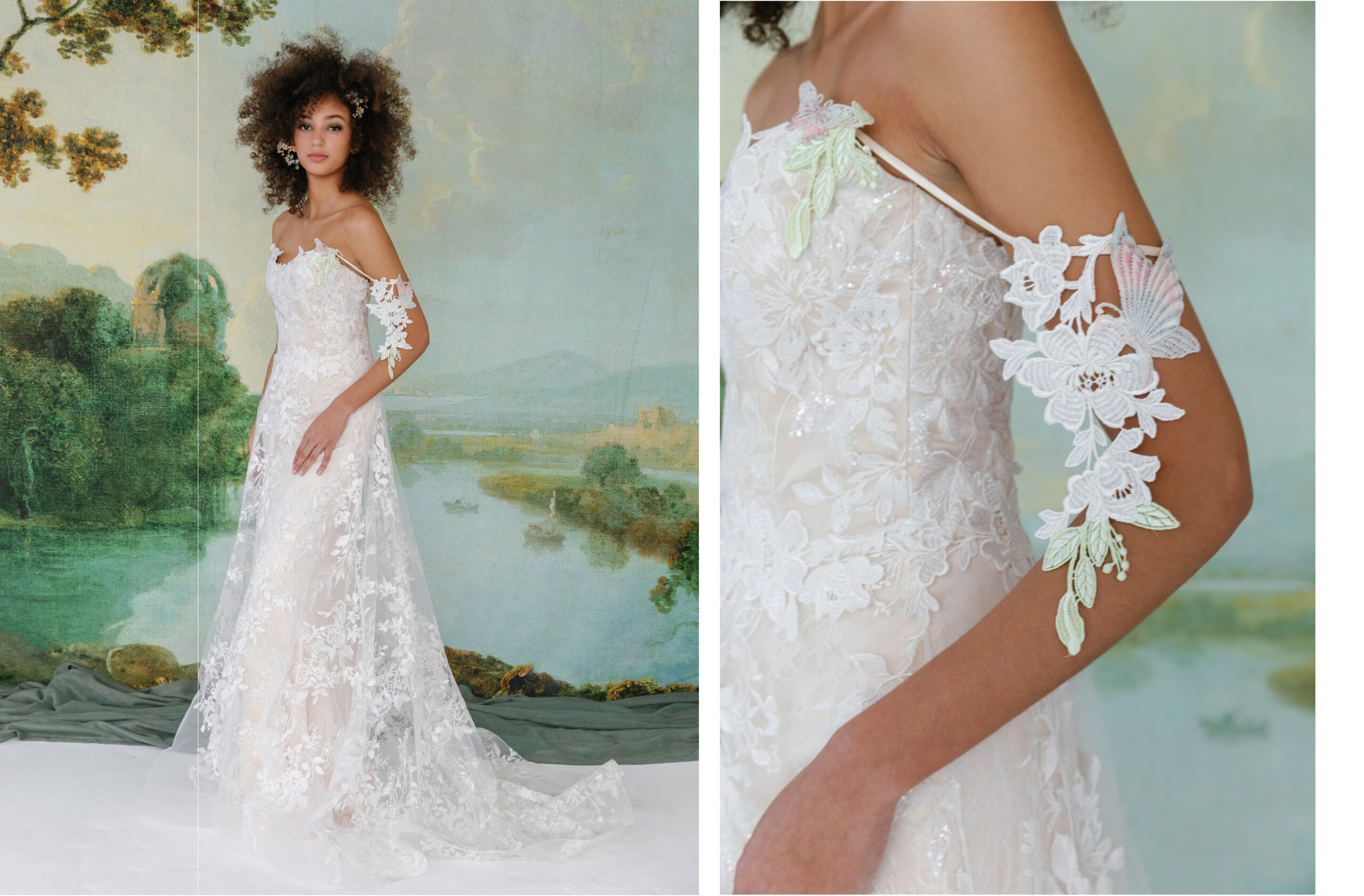
The rise of regal high necklines signaled a new wave of modern refinement. Anne Barge introduced lace-trimmed high collared silhouettes rooted in tradition, yet with a contemporary ease, while Francesca Miranda continued her mastery of modest drama with raised lace and halter-inspired interpretations. Even designers known for bold, directional aesthetics—such as Victor de Souza—embraced high necklines as acanvas for more architectural and fashion-forward statement making pieces.
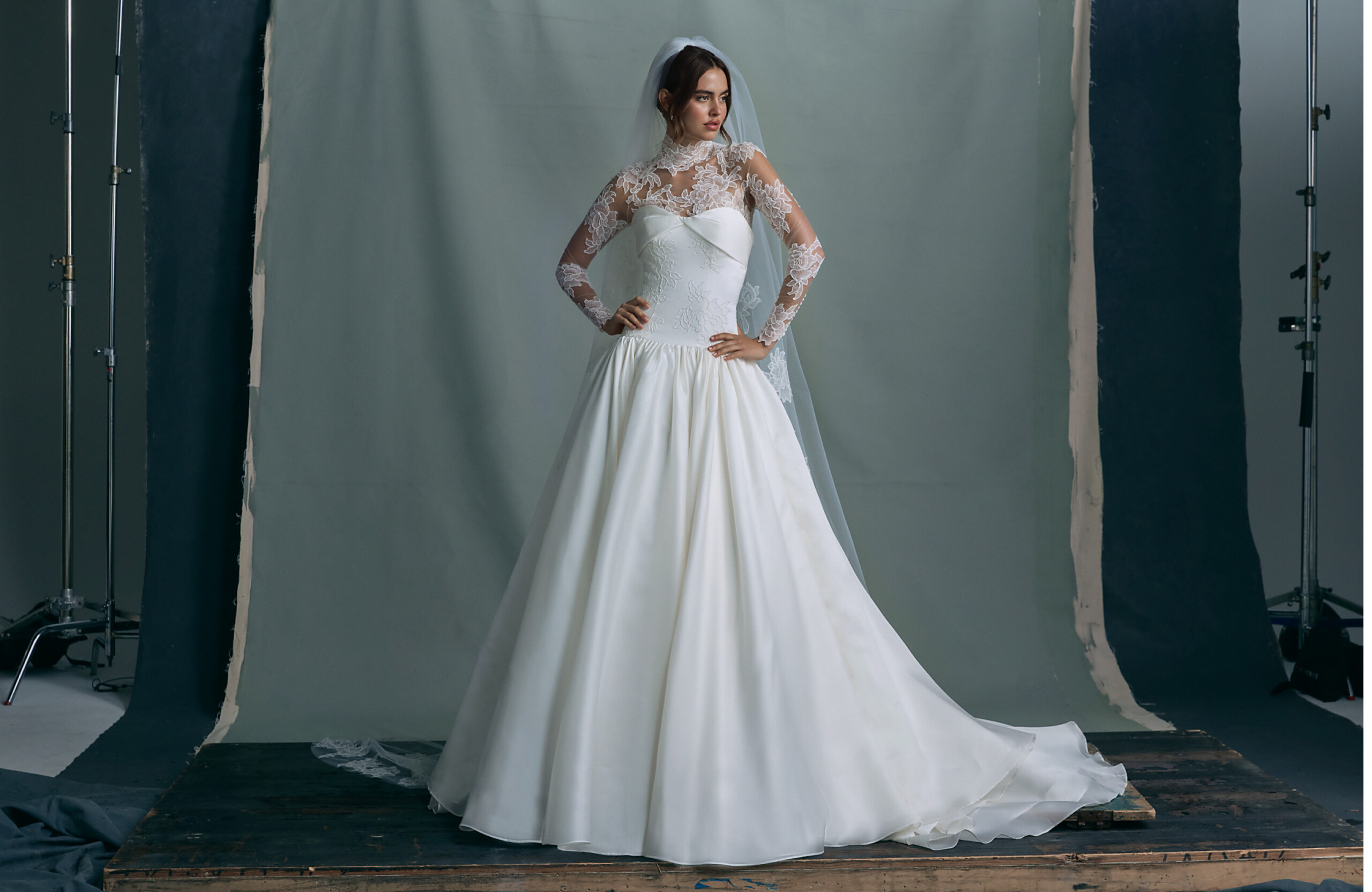
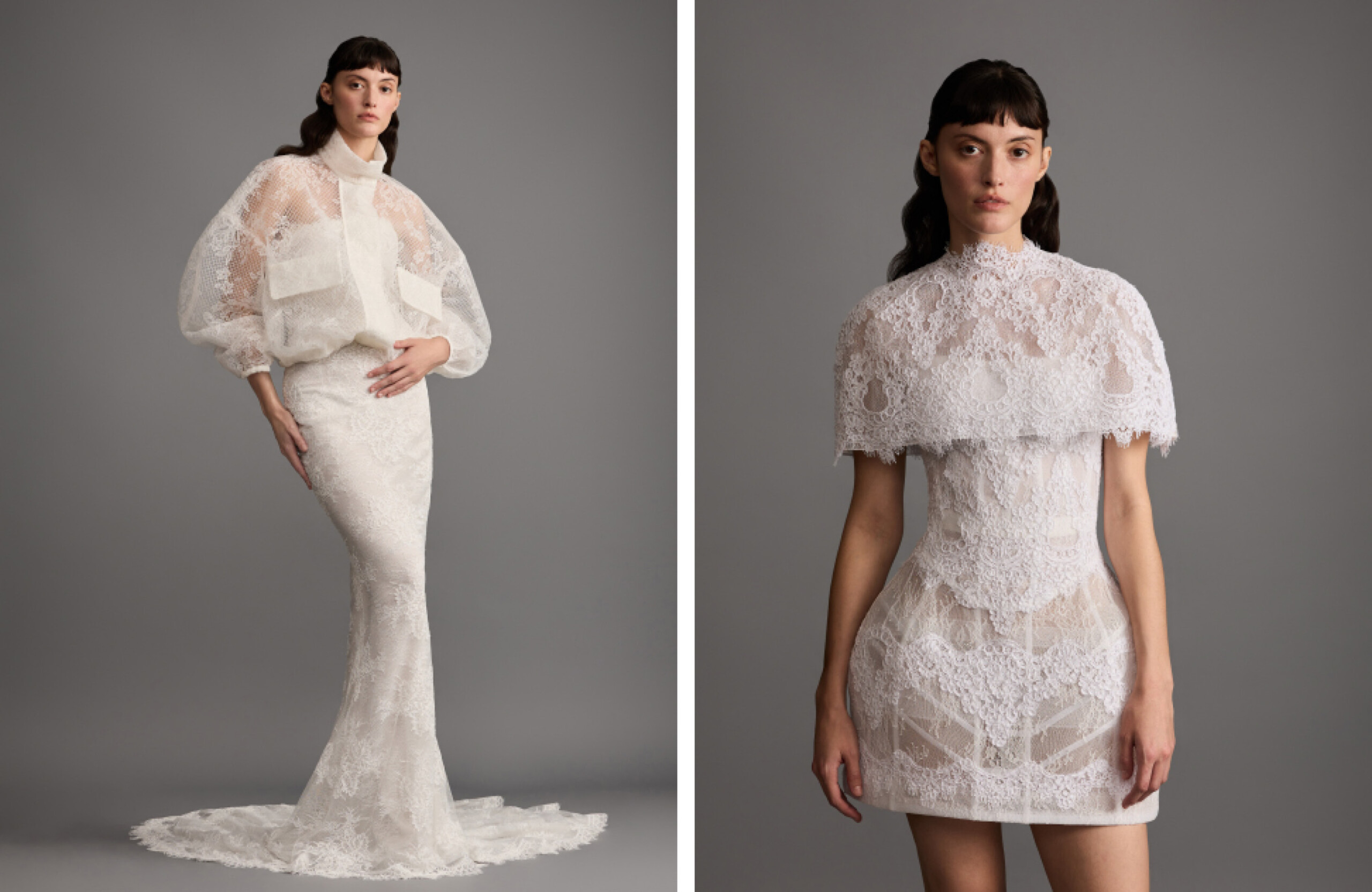
Bows: Playful Sophistication
Bows brought a playful sophistication to the season, appearing in forms that ranged from the architectural like Nardos to minimally romantic. Viktor&Rolf, known for their sculptural playfulness, turned bows into bold focal points, rendering them in crisp satin and taffeta while Marmar Halim and Ines Di Santo offered softer interpretations, seemingly cinching the waist and trailing at the center back of gowns with ribbon-like fluidity.
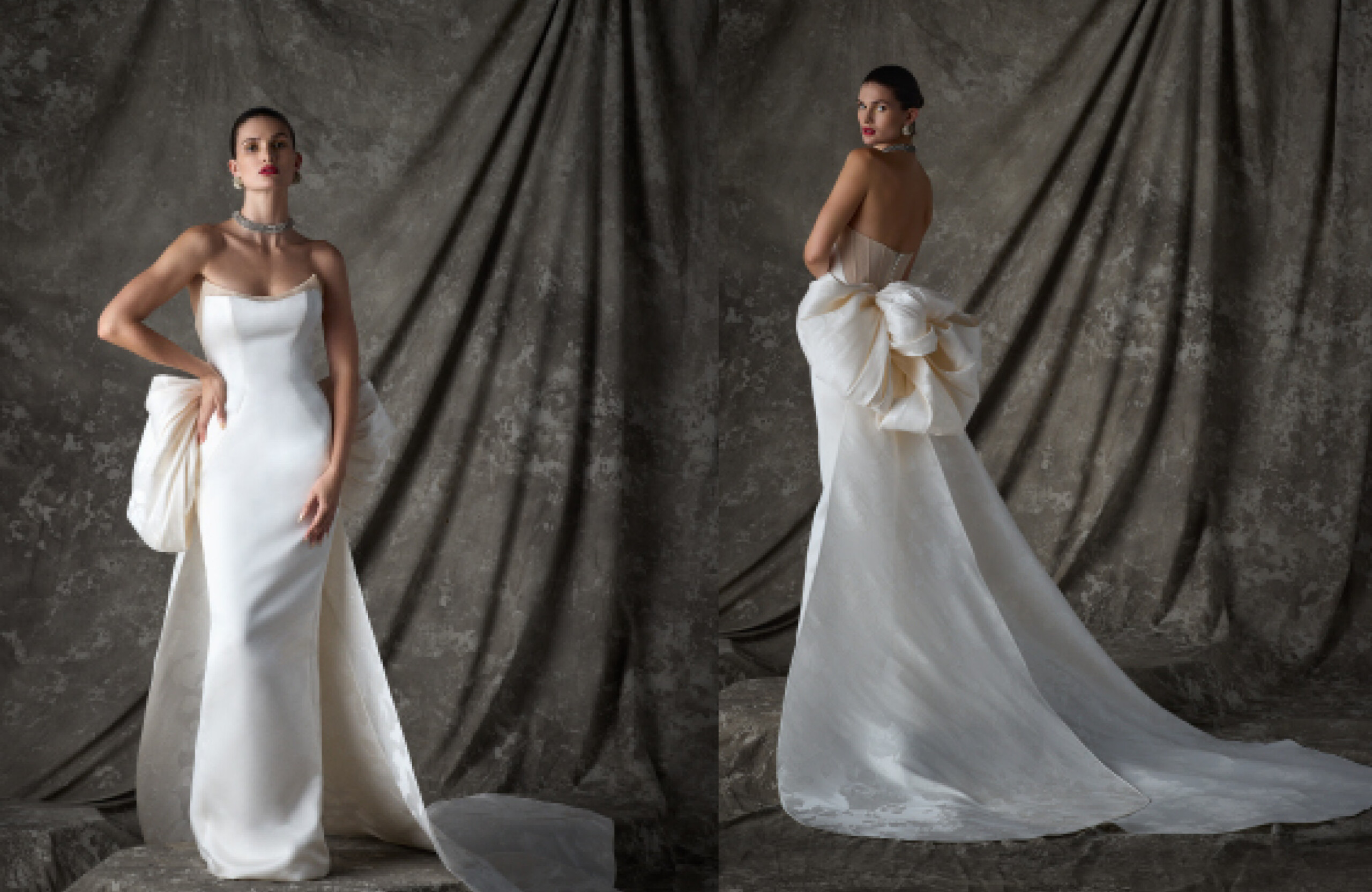
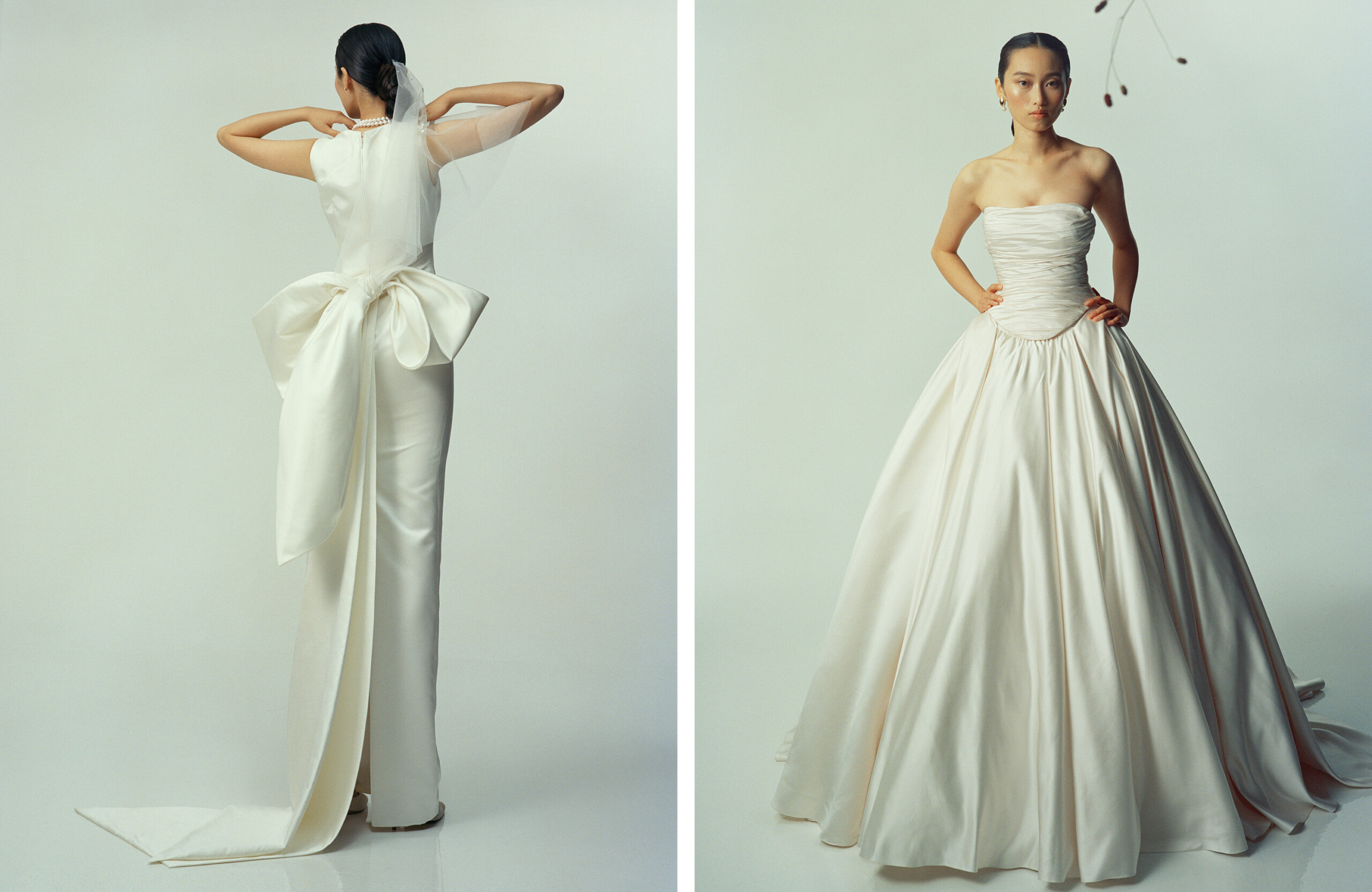
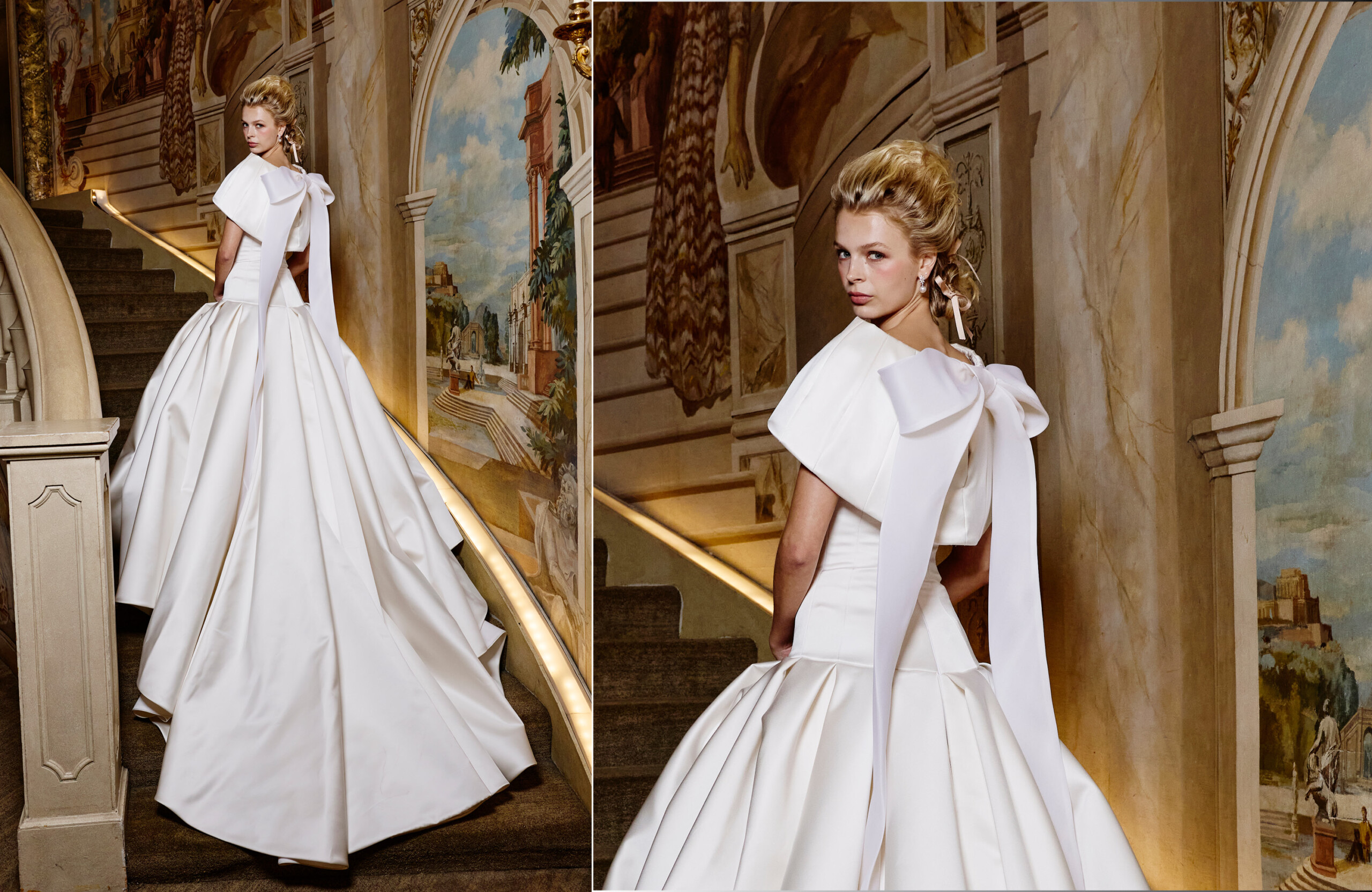
Statement Necklines
In contrast, off-the-shoulder necklines delivered some of the season’s most romantic silhouettes as seen in designs from brands such as Sydney-based Pallas Couture. Designers like Christos Costarellos took the trend into a more directional territory, proving the neckline’s versatility across aesthetics—from ethereal to the avant-garde, while Zuhair Murad infused his signature embellishment into sculpted off-shoulder bodices that sparkled with couture intensity.
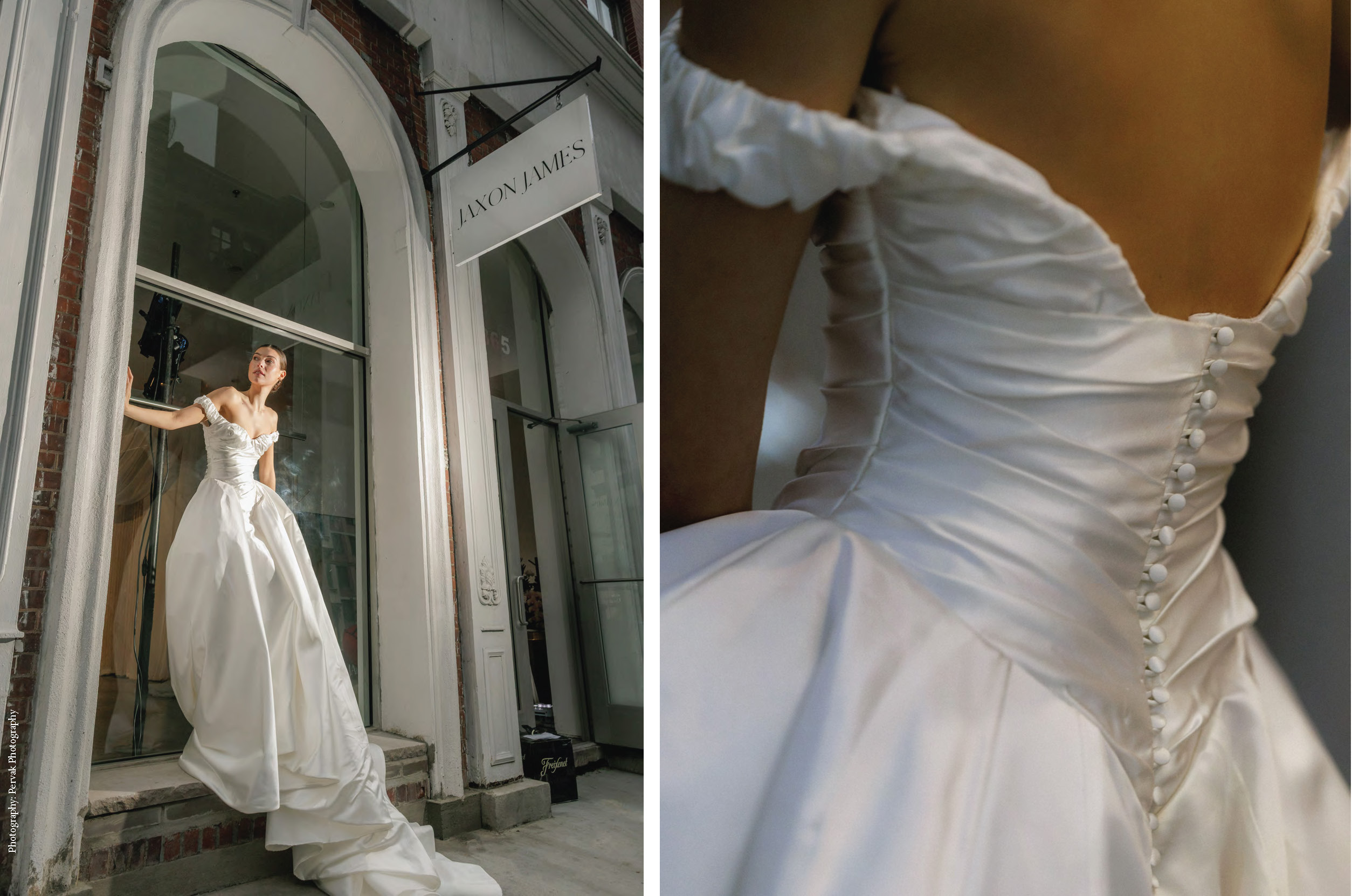
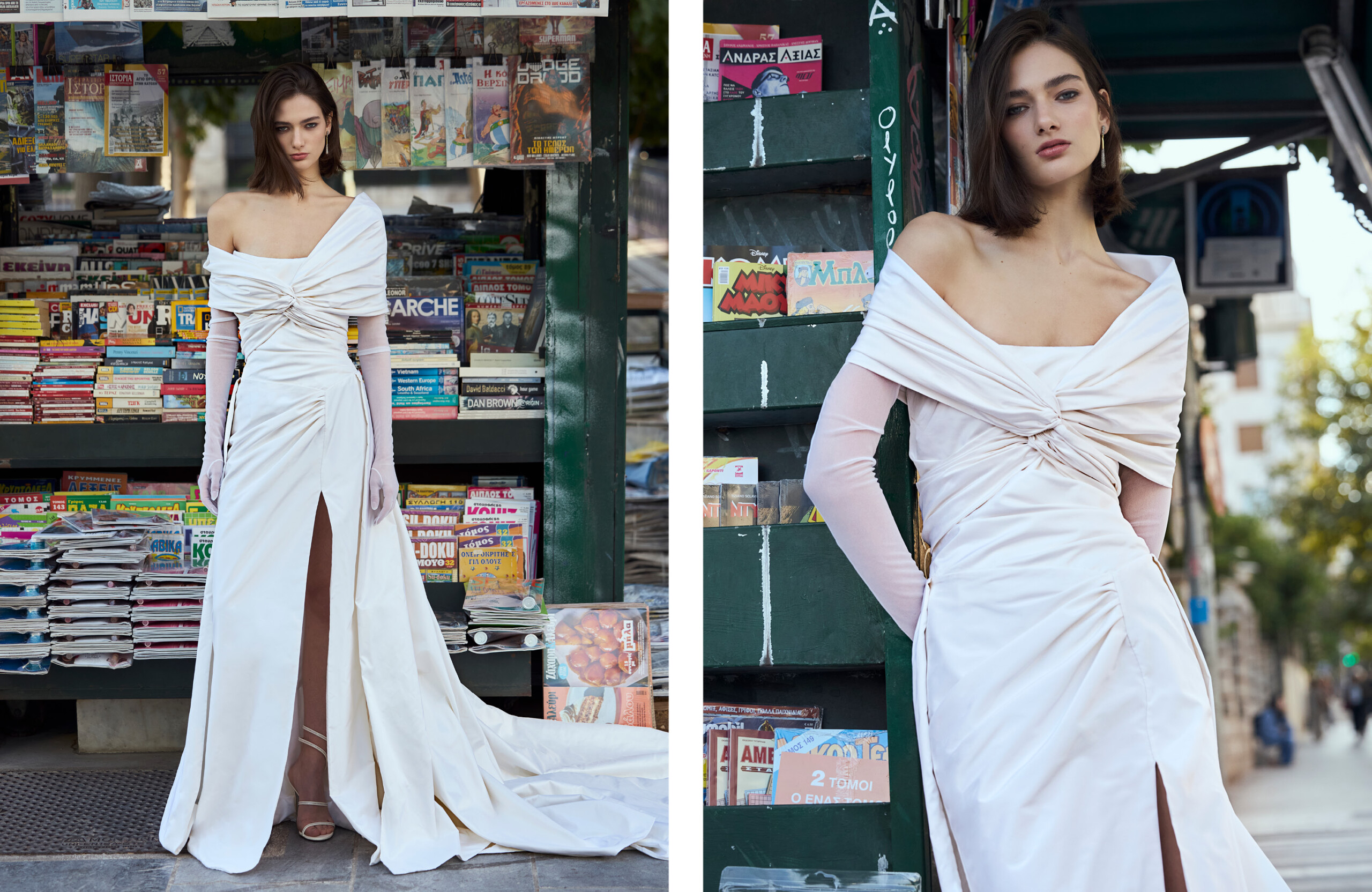
Throughout the collection notes, we found similar terminology being used to describe the designs—words like “architecture,” “sculpture,” “volume,” and “balance.” The result was a season filled with designs that reflected a complex combination of softness and structure and manifested into an array of style trends that provided a thread of cohesion from one design house to the next.




Altogether, the Fall 2026 collections read like a bridal wardrobe for the contemporary social calendar; hyper-crafted, endlessly customizable, and rooted in couture techniques that will let each bride choose how theatrical or pared-back she wants to be.
>Written By: Jillian Magenheim
